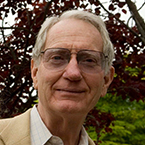
Scientific Areas of Expertise: DNA Damage and Repair; DNA Replication; Transcription
For unparalleled contributions to establishing the DNA damage repair field, highlighted by his co-discovery of DNA excision repair and preferential repair of transcribed genes, the latter of which demonstrated intragenomic DNA repair heterogeneity and the determination that actively expressed genes are repaired through a special transcription-coupled repair pathway; and for developing several experimental approaches to studying DNA repair, including the commonly used Bromodeoxyuridine (BrdU) labeling method for detecting newly synthesized DNA.
A quintessential leader in cancer research, Dr. Hanawalt is heralded for his pioneering contributions to the fields of DNA repair and genomic maintenance. His early career was highlighted by his seminal discovery of the non-conservative mode of DNA repair replication and co-discovery of the ubiquitous pathway of DNA excision-repair. Dr. Hanawalt and his coworkers then discovered a special pathway, termed transcription-coupled repair (TCR) that operates upon the transcribed strands of expressed genes, and documented this in mammalian cells, E. coli, and in yeast chromosomal and plasmid borne genes. The discovery of TCR has had profound implications for studies of mutagenesis, environmental carcinogenesis, and cancer risk assessment. Additionally, Dr. Hanawalt is the architect of several important experimental approaches by which to study DNA repair, including the Bromodeoxyuridine (BrdU) density labeling method, which is widely used for following chromosomal DNA synthesis, validating unscheduled DNA synthesis as repair replication, and measuring DNA repair.
Dr. Hanawalt’s research continued to focus on defining the molecular mechanisms governing TCR, and searching for gratuitous forms of TCR that might contribute to genomic instability. His studies centered on evaluating RNA polymerase encounters with DNA lesions to learn the precise signals that initiate TCR to overcome transcriptional blockage. Utilizing peptide nucleic acid targeted to uniquely expressed genes, Dr. Hanawalt and his colleague, Boris Belotserkovskii, have more recently developed an approach to generate stable RNA-DNA hybrids (R-loops) for cancer therapies that would render transcription toxic for selected tumor cells and cancer metastases. Dr. Hanawalt has a continuing interest in the examination of tumor cell responses to oxidative injury in patients with DNA repair deficient disorders such as xeroderma pigmentosum, Cockayne syndrome and UV-sensitive syndrome.
Selected Awards and Honors
2015 Wilbur Lucius Cross Medal, Yale University Graduate School Alumni Association, New Haven, Connecticut
2015 Doctor Honoris Causa, Universidad Mayor de San Andrés, La Paz, Bolivia
2012 Doctor Honoris Causa, University of Buenos Aires, Buenos Aires, Argentina
2011 AACR-Princess Takamatsu Lectureship, American Association for Cancer Research, Philadelphia, Pennsylvania
2008 Doctor Honoris Causa, University of Seville, Seville, Spain
2008 Elected Fellow, American Academy of Arts and Sciences, Cambridge, Massachusetts
2006 Doctor Honoris Causa, University of Biobío, Concepcion, Chile
2003 Rothschild-Yvette Mayent-Institut Curie Award and Lectureship, Institut Curie, Paris, France
2002 John B Little Award in Radiation Health Sciences, Harvard School of Public Health, Boston, Massachusetts
2001 Elected Foreign Associate, European Molecular Biology Organization, Heidelberg, Germany
1997 Honorary Doctor of Science, Oberlin College, Oberlin, Ohio
1993 Elected Fellow, American Academy of Microbiology, American Society of Microbiology, Washington, DC
1992 Annual Award for Excellence in Basic Science, Environmental Mutagen Society, Jacksonville, Florida
1989 Elected Member, National Academy of Sciences, Washington, DC
1987 – 2001 Outstanding Investigator Research Award, National Cancer Institute, National Institutes of Health, Bethesda, Maryland
1981 Elected Fellow, American Association for Advancement of Science, Washington, DC